Most people think of zebras as gentle, striped grazers roaming peacefully in the wild. But did you know that zebras are surprisingly aggressive and territorial? Unlike their horse relatives, they are known to bite, kick, and even attack when they feel threatened. In regions where zebras come into contact with humans, farms, or livestock, they can pose unexpected dangers.
This is where powerful guard dogs step in. With the right training, these fearless canines can protect your property, livestock, and family from unexpected zebra encounters. But not all dog breeds are built for such a challenge. You need a breed with unmatched strength, intelligence, and a natural guarding instinct to stand up to such wild threats.
In this guide, we’ll uncover 7 of the best guard dog breeds that are strong, fearless, and ready to defend. Whether you live in zebra-prone areas or simply need a tough guardian, these dogs have got you covered.
Guard Dog Breeds for Protection Against Zebras
1. Anatolian Shepherd
Quick Facts:
- Known for: Fearless protection, independence
- Ideal for: Farms, large properties, experienced owners
- Temperament: Loyal, strong-willed
The Anatolian Shepherd’s origins trace back over 6,000 years to the rugged landscapes of Turkey, where it was bred to guard livestock against wolves, bears, and even human threats. These livestock guardian dogs developed unmatched endurance and intelligence, making them excellent protectors.
This breed is massive and powerful, often standing over 29 inches tall and weighing up to 150 pounds. Their muscular build, thick double coat, and keen eyesight make them a formidable force against threats. Unlike many other dogs, the Anatolian Shepherd doesn’t just react—it assesses situations carefully before deciding whether to engage, making it an efficient and strategic protector.
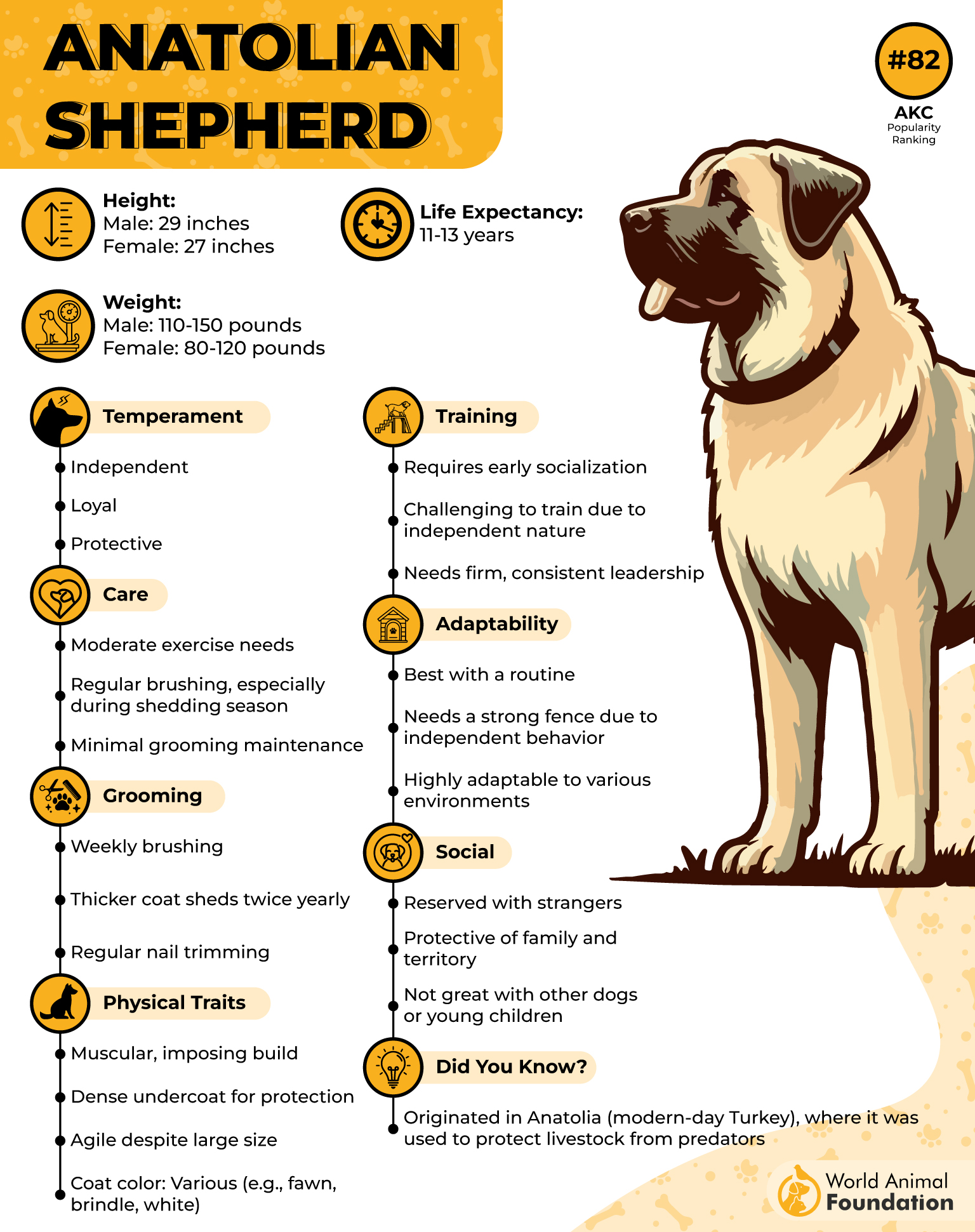
Despite their imposing size, these dogs are not unnecessarily aggressive. They are highly intelligent, independent thinkers who form strong bonds with their owners. While their instinct is to protect, they are gentle with family members but will quickly step up when they sense danger. Their ability to function as guardian animals without constant supervision makes them a top choice for farms and ranches.
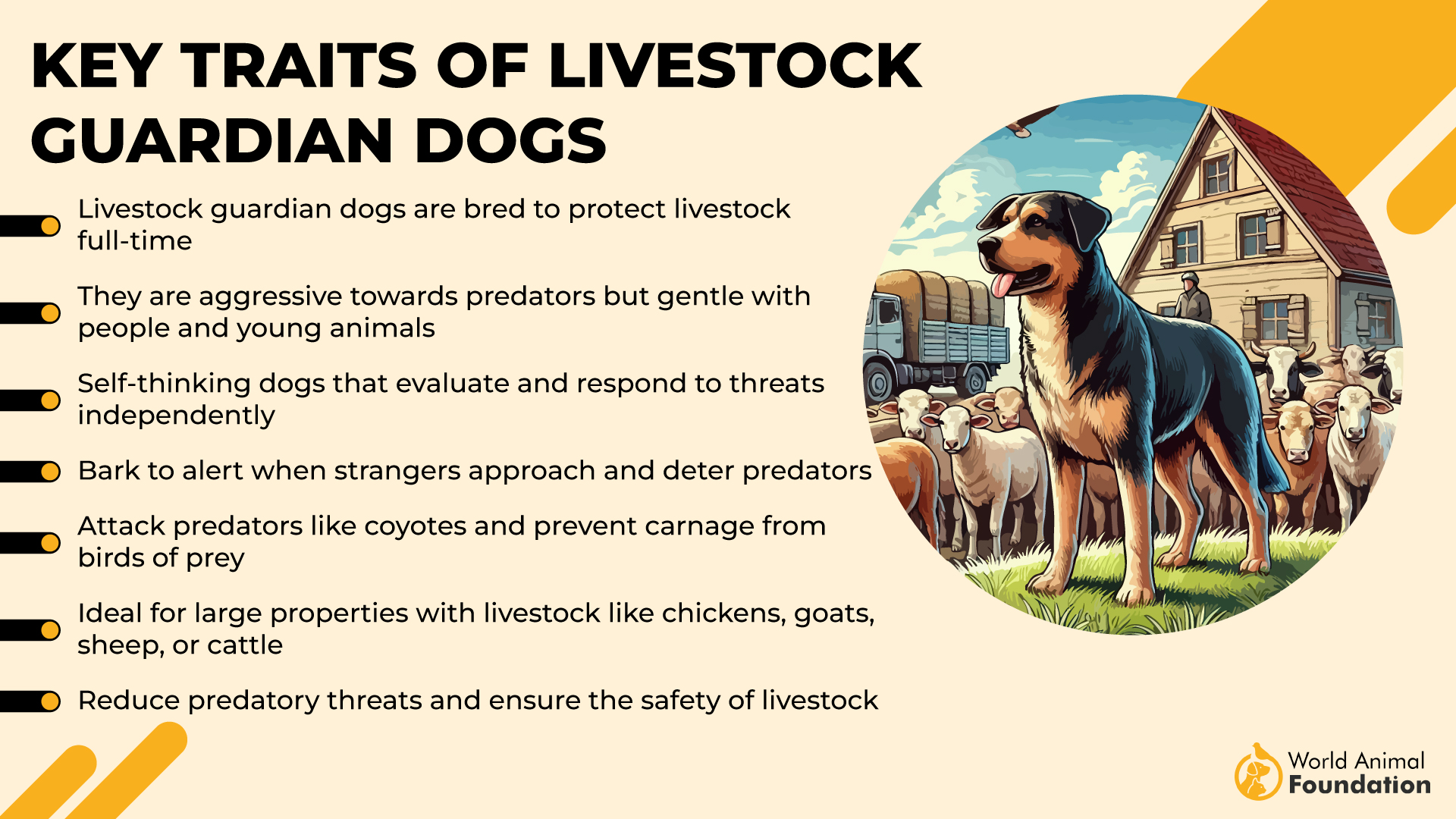
Training an Anatolian Shepherd requires patience and consistency. They are best trained from a young age, using firm yet positive reinforcement techniques. Unlike some other dogs, they don’t respond well to repetitive drills but excel when given purpose-driven tasks. Socializing them early helps ensure they can coexist with people, livestock, and other animals without unnecessary aggression.
When it comes to zebras, the Anatolian Shepherd’s sheer size and confidence make it a solid deterrent. These dogs work instinctively to guard their territory, and their deep bark alone is often enough to send a zebra running. If a confrontation arises, their quick reflexes and powerful build allow them to hold their ground without backing down.
2. Tibetan Mastiff
Quick Facts:
- Known for: Fierce loyalty, ancient lineage
- Ideal for: Experienced owners, large spaces
- Temperament: Protective, independent
The Tibetan Mastiff isn’t just any guard dog—it’s a living legend. Originating from the Himalayas, this breed was raised by Tibetan monks and nomadic herders to protect animals from wolves, leopards, and even snow leopards. Their ability to survive in extreme conditions and deter predators without human intervention made them the ultimate guardian animals for centuries.
Physically, they’re an absolute powerhouse. Males can weigh up to 160 pounds, with a thick mane that makes them look even bigger—like a lion in disguise. Their strong jaws, muscular build, and deep bark create an intimidating presence, enough to send unwanted intruders packing. Unlike some other guardian animals, heir protective nature isn’t just about brute force; they use their intelligence to assess threats before acting.
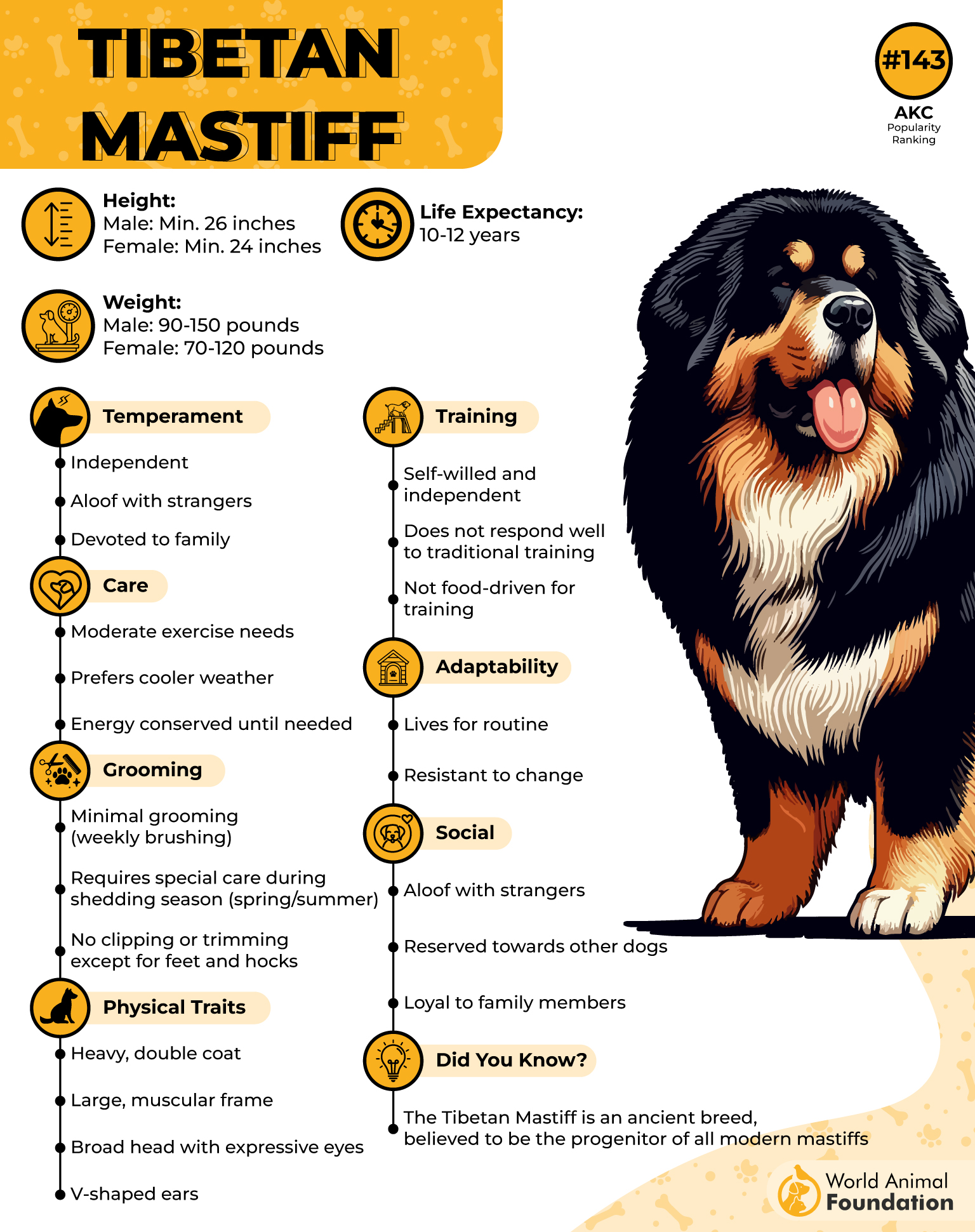
This breed is naturally territorial and strong-willed. While they form deep bonds with their families, they’re not the type to wag their tails at strangers. Their independent nature means they don’t always seek approval, but when it comes to guarding, they take their job seriously. Unlike many guardian animals, they don’t rely on commands—they decide for themselves when danger is near.
Training a Tibetan Mastiff isn’t for the faint-hearted. They need early socialization to protect livestock effectively without becoming overly aggressive. Because of their independent mindset, they respond best to firm but patient training, rather than strict obedience drills. Unlike many dogs, they won’t perform tricks just for fun—every action has to have a purpose.
Zebras might seem harmless, but a territorial Tibetan Mastiff won’t see them that way. With their massive build and fearless nature, they can easily block a zebra’s path and stand their ground. While they may not chase zebras outright, their deep, commanding bark alone is enough to make these striped intruders think twice before stepping closer.
3. Komondor
Quick Facts:
- Known for: Dreadlock-like coat, fearless nature
- Ideal for: Farms, open spaces
- Temperament: Protective, independent
The Komondor might look like a giant mop, but don’t let the fluffy exterior fool you—this breed is a wonderful guardian. Originating from Hungary, these dogs were bred to protect livestock from many predators, including wolves and bears. Their signature corded coat isn’t just for style; it acts as natural armor, keeping them safe from bites and harsh weather.
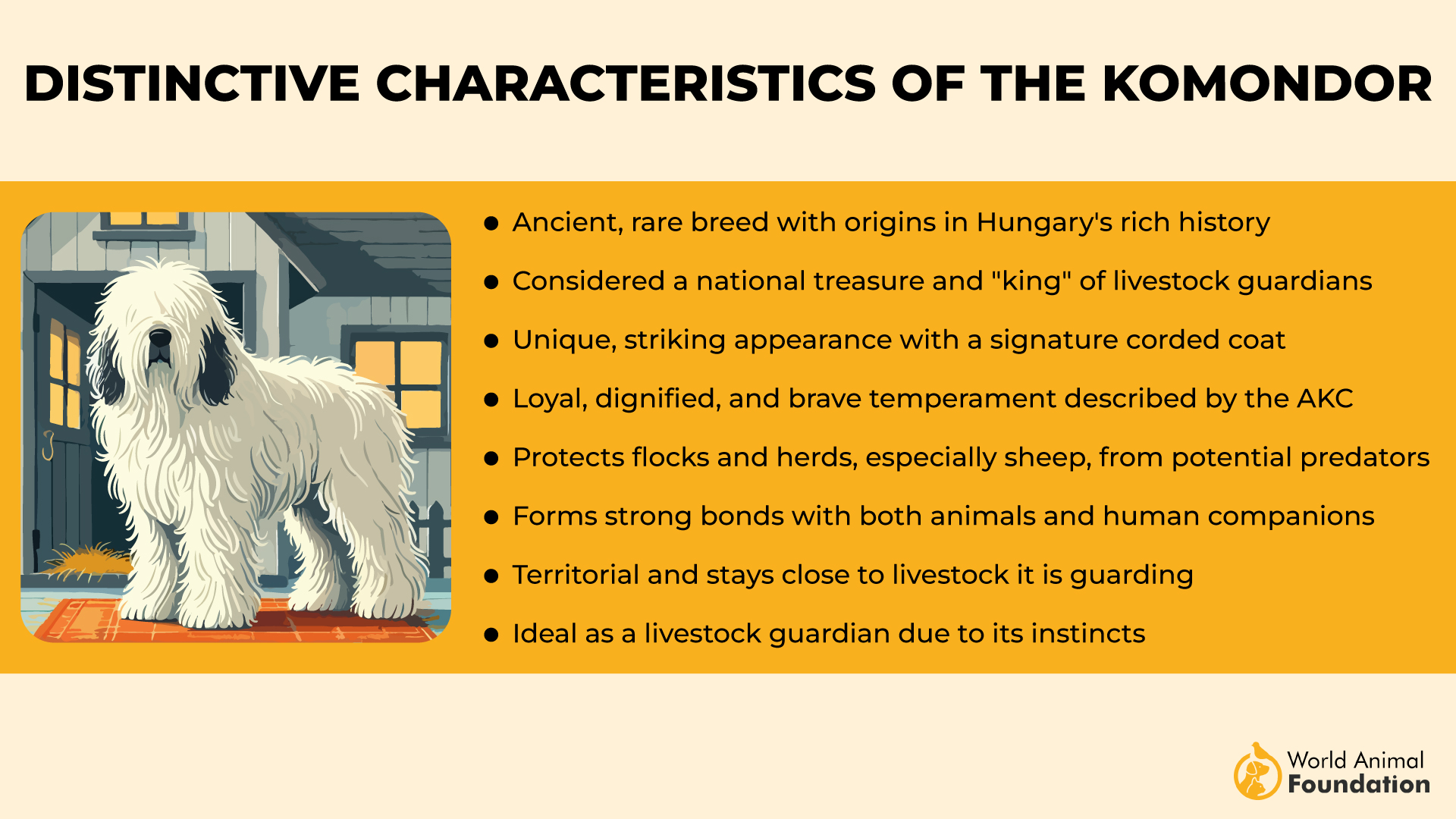
With a massive frame and weighing up to 130 pounds, the Komondor is built for defense. Their thick, rope-like fur helps them blend in with sheep, allowing them to surprise attackers. Despite their calm nature around their family, they spring into action the moment they sense a threat. The ability to remain still for hours before striking makes them one of the most strategic guard dogs out there.
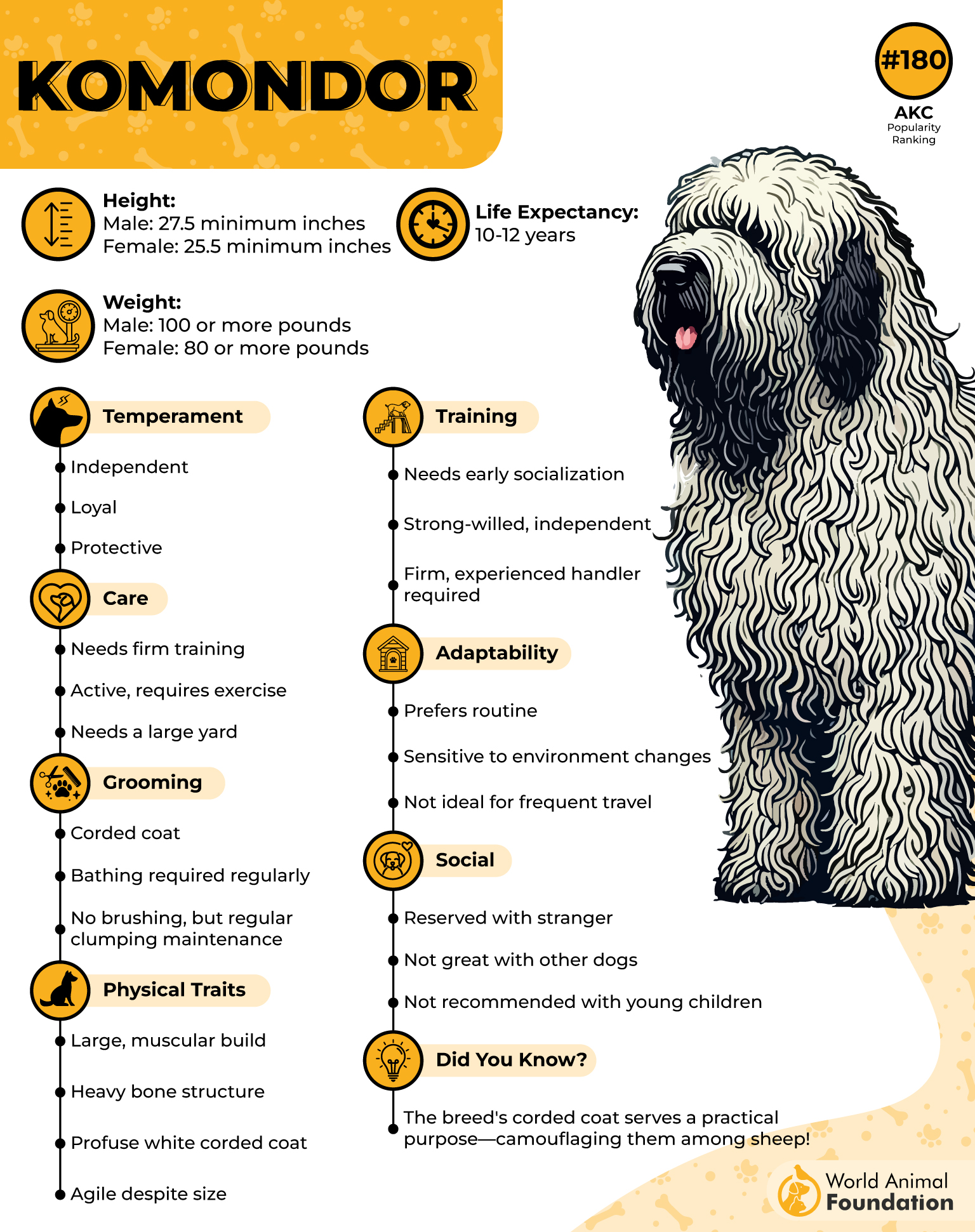
Komondors are fiercely territorial and independent, meaning they won’t hesitate to challenge an intruder—whether it’s a human, a wild animal, or an overly curious zebra as mentioned in AKC. They’re naturally suspicious and won’t befriend strangers easily. Once bonded with their owners, though, their loyalty is unshakable. Unlike some breeds, they don’t bark just for fun—if a Komondor sounds the alarm, it’s for a reason.
Training a Komondor requires patience. Since they were bred to work alone, they don’t always look for guidance from their owners. Early socialization as a puppy is key to making sure they can differentiate between actual threats and harmless visitors. Consistency is important because this breed is smart enough to recognize gaps in authority and will take charge if given the chance.
With their protective instincts and powerful presence, Komondors can easily handle predator pressure from unexpected threats—including a zebra stampede. Their sheer size and unshakable confidence make them a force to be reckoned with, ensuring that their territory stays secure no matter what.
4. Alabai
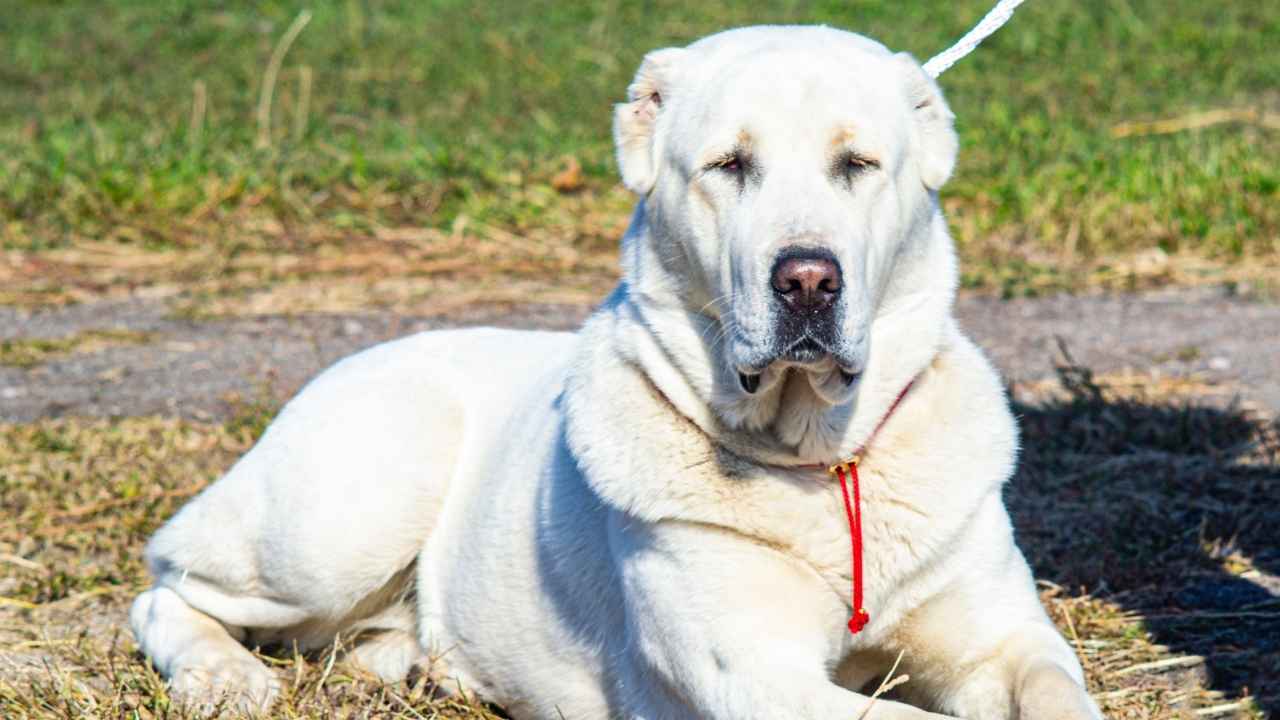
Quick Facts:
- Known for: Fearless nature, unwavering loyalty
- Ideal for: Farms, large properties
- Temperament: Strong-willed, protective
The Alabai, also called the Central Asian Shepherd, has been guarding livestock for over 4,000 years. Originating from regions like Turkmenistan and Kazakhstan, these dogs were bred to protect their flock from dangerous predators, including wolves and coyotes. Their endurance and survival instincts were shaped by harsh environments, making them one of the toughest guardian breeds out there.
Built like a tank, the Alabai can weigh over 170 pounds, with a muscular frame designed for power. Their thick double coat shields them from extreme weather, while their strong jaws and fearlessness mean they don’t just chase off threats—they kill when necessary. Whether it’s protecting a pasture full of cattle or standing guard at home, this breed is always on high alert.
Alabais are highly independent, with a natural-born instinct to protect. They don’t rely on commands to do their job—if they sense danger, they’ll act without hesitation. Their loyalty to their family is unmatched, but they aren’t the type to roll over for strangers. While they can make a great pet, they require an experienced owner who understands their guardian mindset.
Raising an Alabai requires firm but respectful training. Early exposure to different environments and structured lessons from the pup stage helps them differentiate between real threats and everyday situations. They aren’t the easiest dogs to train, but once they respect you, they’ll put their life on the line to defend what’s theirs.
When it comes to coyotes or other wild threats, an Alabai doesn’t just bark warnings—they act. Their strength and confidence allow them to control an entire flock, and they’re not afraid to lead when the situation calls for it. Even a charging zebra would think twice before challenging this breed, as the Alabai will stand its ground no matter what.
5. Belgian Malinois
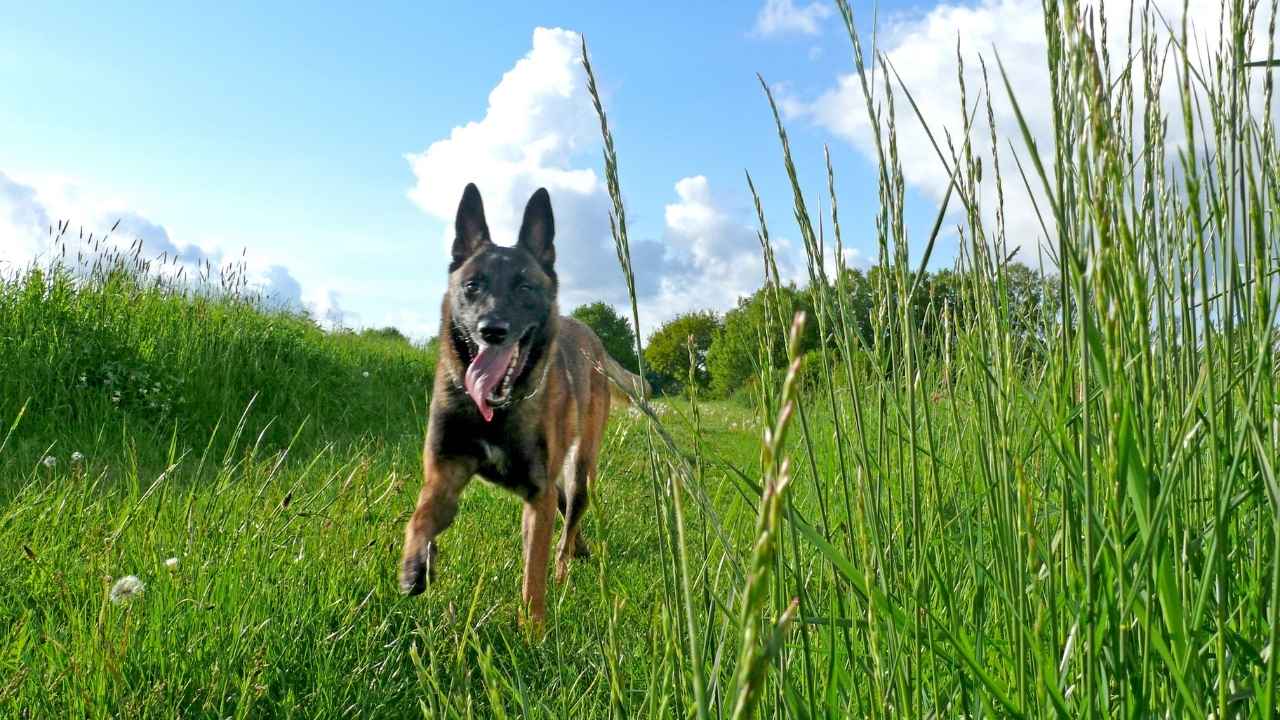
Quick Facts
- Known for: Sharp intelligence, unmatched agility
- Ideal for: Active owners, working environments
- Temperament: Loyal, driven
Originating in Belgium, the Belgian Malinois was bred for herding but quickly gained recognition as a top-tier working dog. Its natural instincts and sharp reflexes made it a favorite among herders, and over time, its guarding skills became just as valuable. With an alert mind and a fearless attitude, it evolved into a breed trusted for security, police work, and even military operations.
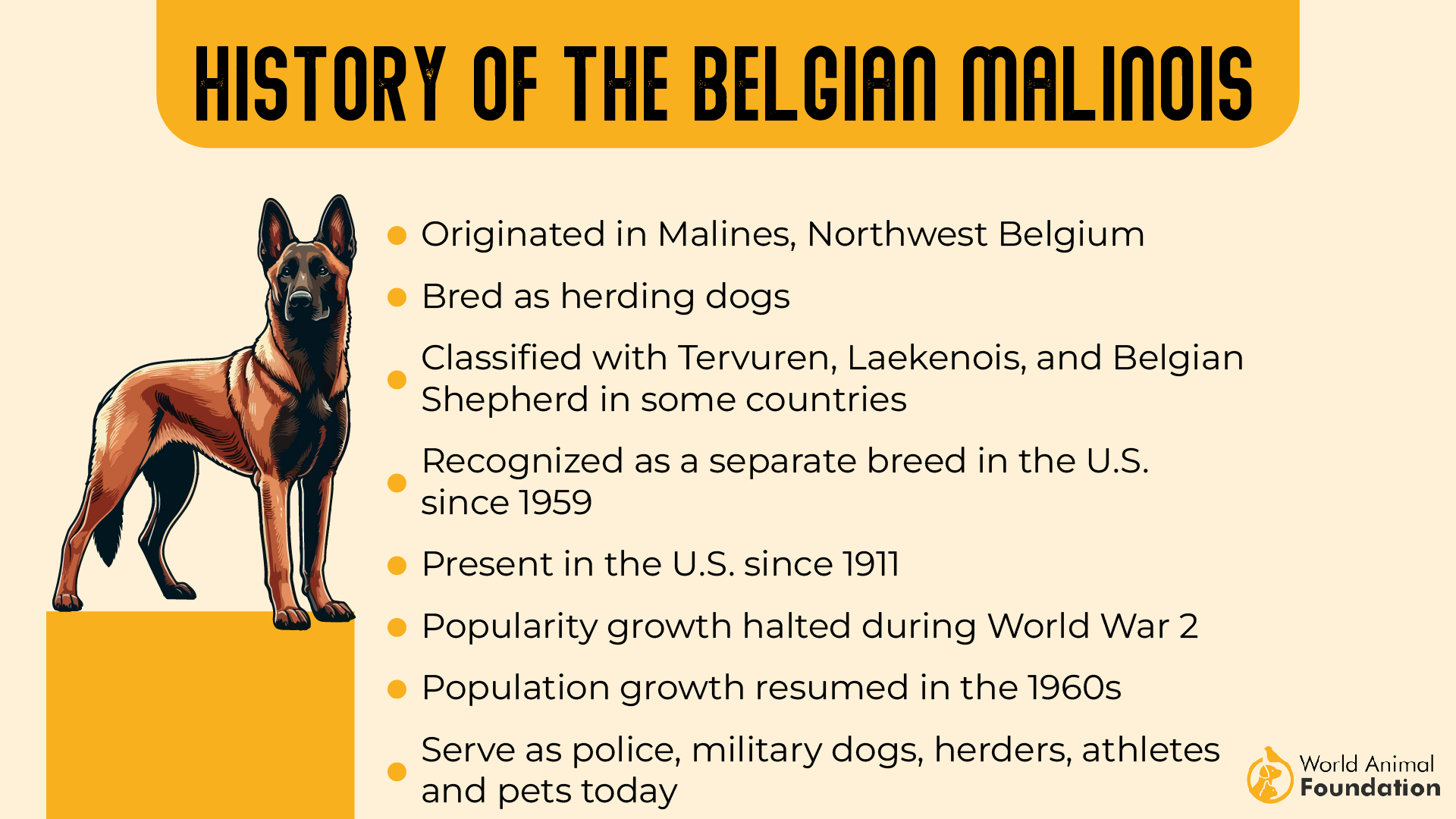
Built like a powerhouse, the Malinois is lean but incredibly strong. Its athletic frame allows for explosive speed and high-endurance tasks, making it a natural at fending off threats. A short, weather-resistant coat keeps it comfortable in various conditions, while its intense gaze ensures nothing goes unnoticed. It may not be the biggest guardian dog, but it makes up for that with agility and lightning-fast reactions.
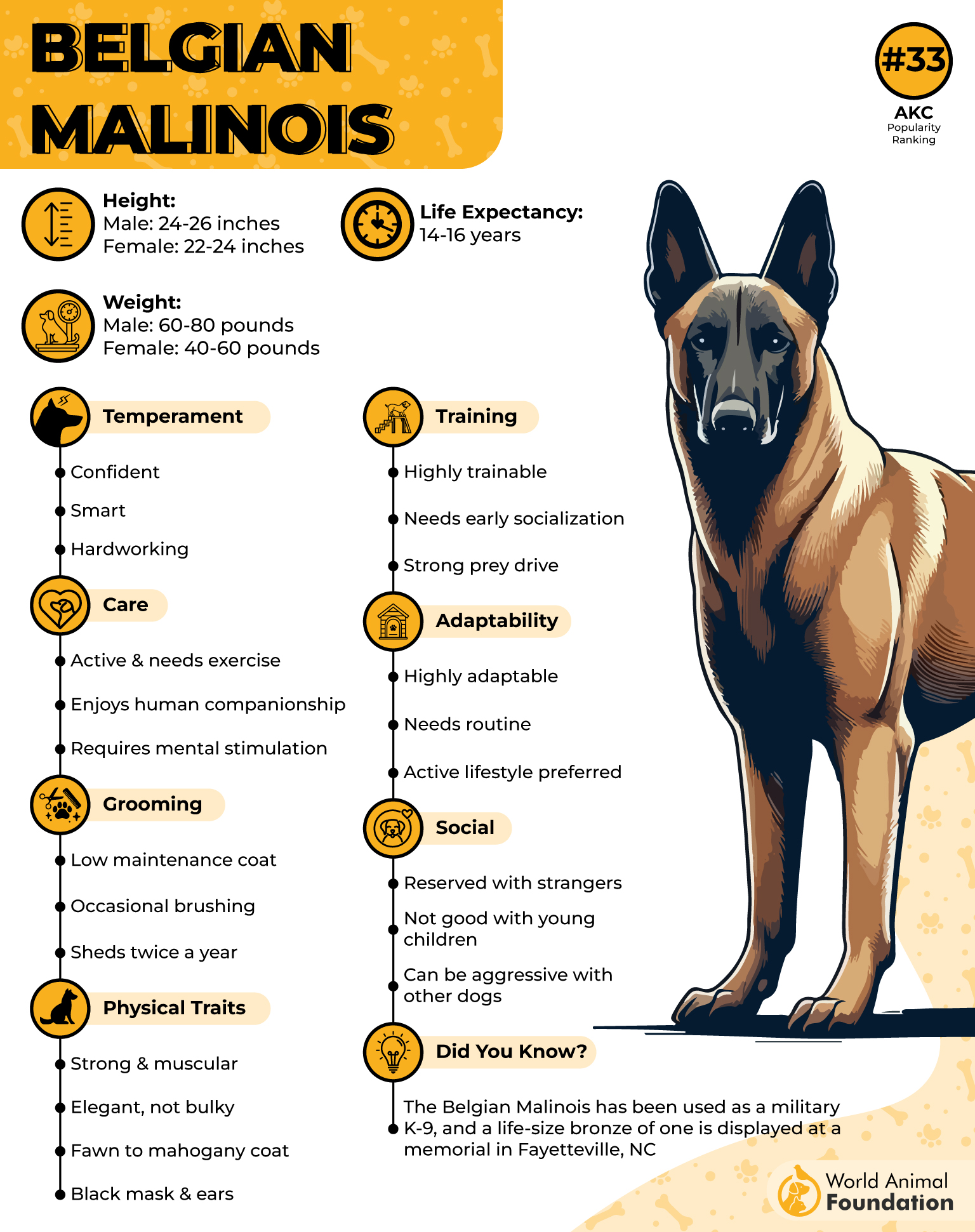
This breed doesn’t just follow orders—it anticipates them. Incredibly intelligent and naturally protective, it forms deep bonds with its handler. While it can be affectionate with family, it remains serious about its work and won’t back down from a challenge. Its energy levels are through the roof, which means it thrives in active environments where it has a purpose.
Training a Malinois isn’t for the faint-hearted. This breed needs structure, consistency, and a firm but fair approach. Early socialization is key to ensuring it gets along with other animals, but it always keeps a keen eye on its surroundings. It excels in obedience training and enjoys high-intensity tasks, making it a perfect fit for experienced handlers.
When it comes to zebras, the Malinois may not have the bulk to overpower them, but it sure has the speed to outmaneuver them. Quick reflexes and sharp instincts allow it to control movements, making it surprisingly effective at keeping them in check. If the situation calls for it, this breed will stand its ground and make sure the zebra knows who’s boss.
6. Briard
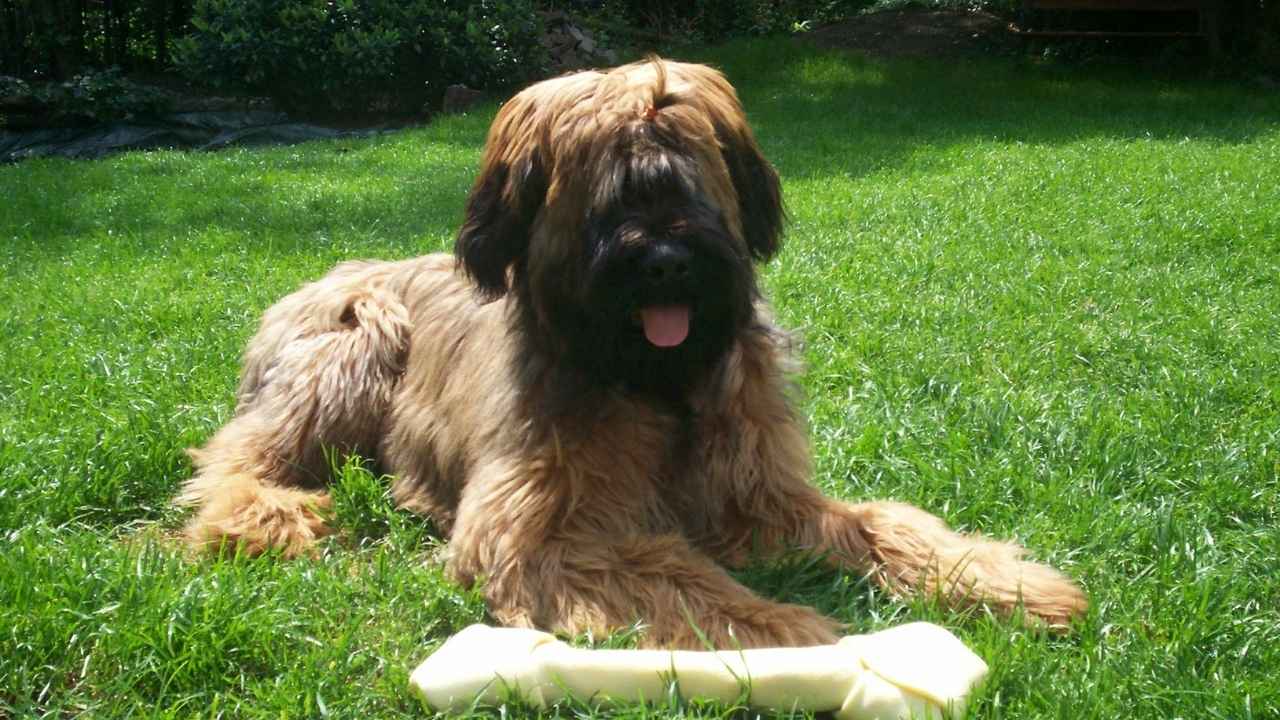
Quick Facts:
- Known for: Intelligence, herding instincts
- Ideal for: Active families, farms, ranches
- Temperament: Fearless, affectionate, independent
The Briard has been a trusted herding and guardian animal in France for centuries. Originally bred to protect and guide livestock, this breed was a favorite among French farmers—and even Napoleon himself. Their keen sense of awareness and unwavering loyalty made them essential workers in fields and pastures, keeping both sheep and cattle in line.
This shaggy-coated powerhouse isn’t just for show. Beneath all that fur is a muscular, agile body built for endurance. With their sharp eyes hidden behind their long bangs, Briards have a unique way of scanning their surroundings without giving away their next move. Their powerful legs and sturdy frame allow them to tackle any threat, making them excellent guardian animals against intruders.
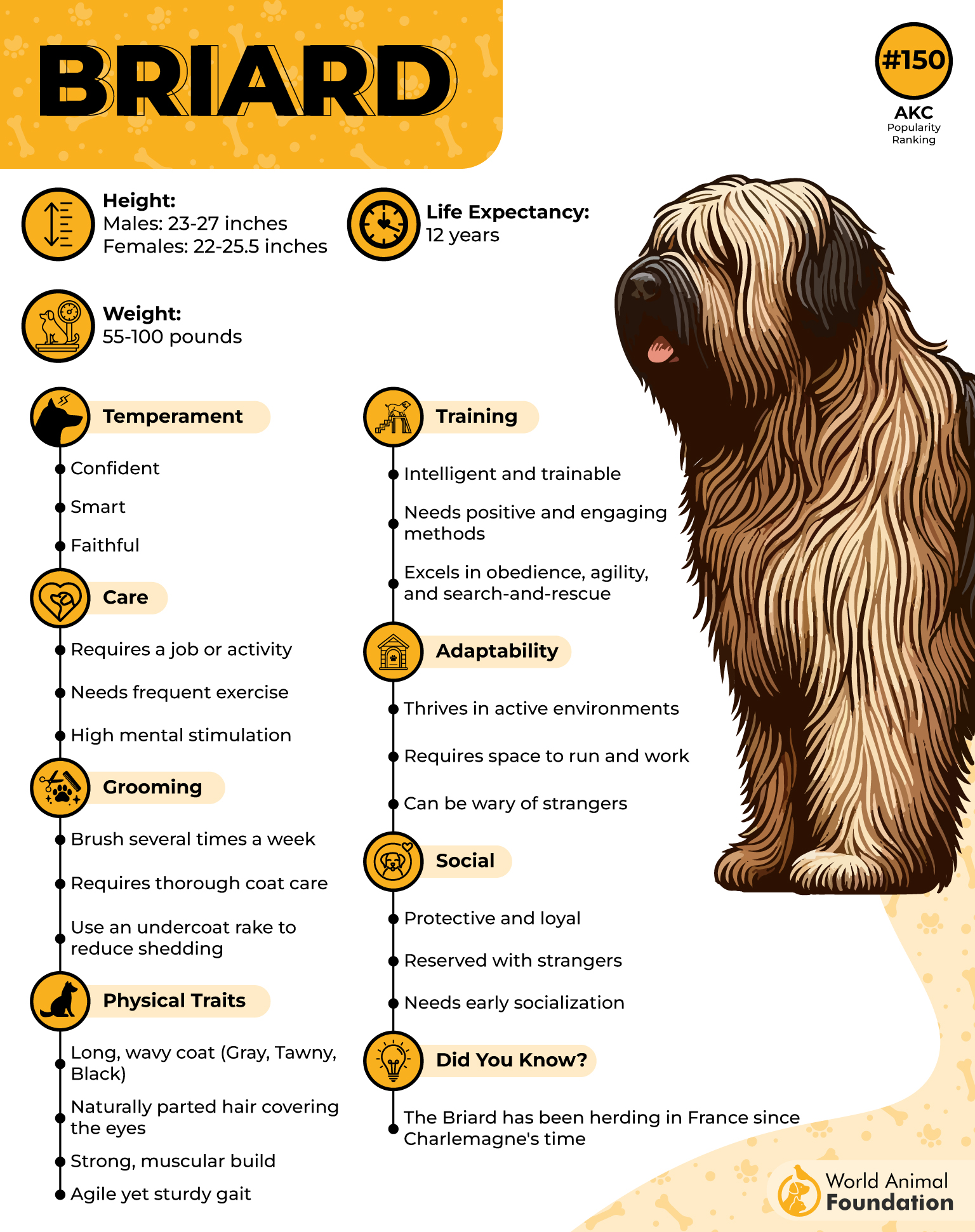
According to Zealandia Pets, Briards have a natural instinct to protect, but they’re not reckless. They are calm and observant, stepping in only when truly necessary. Their intelligence makes them quick learners, but their independent streak means they won’t blindly follow orders. They bond deeply with their families, making them both affectionate companions and fierce guardian animals when duty calls.
Training a Briard requires patience and consistency. These dogs thrive on structure and clear leadership, but harsh methods won’t work—they need respect, not dominance. Early socialization helps them work well with other dogs and livestock, reinforcing their role as dependable guardian animals that know when to be gentle and when to take control.
Against a zebra? A Briard’s strategy would be all about control rather than brute force. Their herding instincts would kick in, using quick movements and strategic positioning to steer the zebra away from danger. While they may not have the sheer power of some larger guardian animals, their intelligence and agility make them a clever and effective deterrent.
7. Caucasian Shepherd
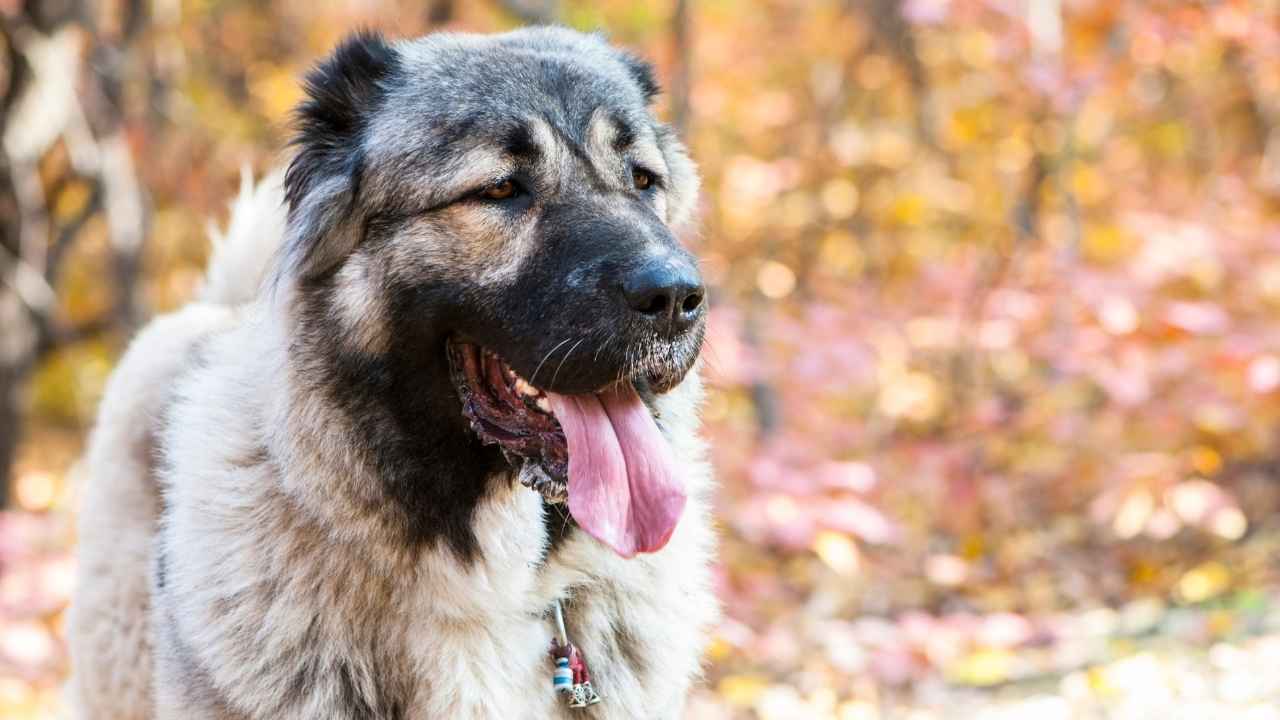
Quick Facts:
- Known for: Sheer power, fearless guarding
- Ideal for: Experienced owners, large spaces
- Temperament: Protective, strong-willed, loyal
The Caucasian Shepherd has been defending livestock and property in the rugged mountains of Eastern Europe for centuries. Originally bred by shepherds to ward off wolves and bears, this breed developed an unmatched instinct for protection. Over time, its reputation grew, making it a top choice for those needing a fearless guardian.
Massive and intimidating, this dog is pure muscle wrapped in a thick, weatherproof coat. Their broad chest, powerful jaws, and sharp instincts make them an imposing force against intruders. Despite their size, they move with surprising agility, always ready to confront any threat head-on without hesitation.
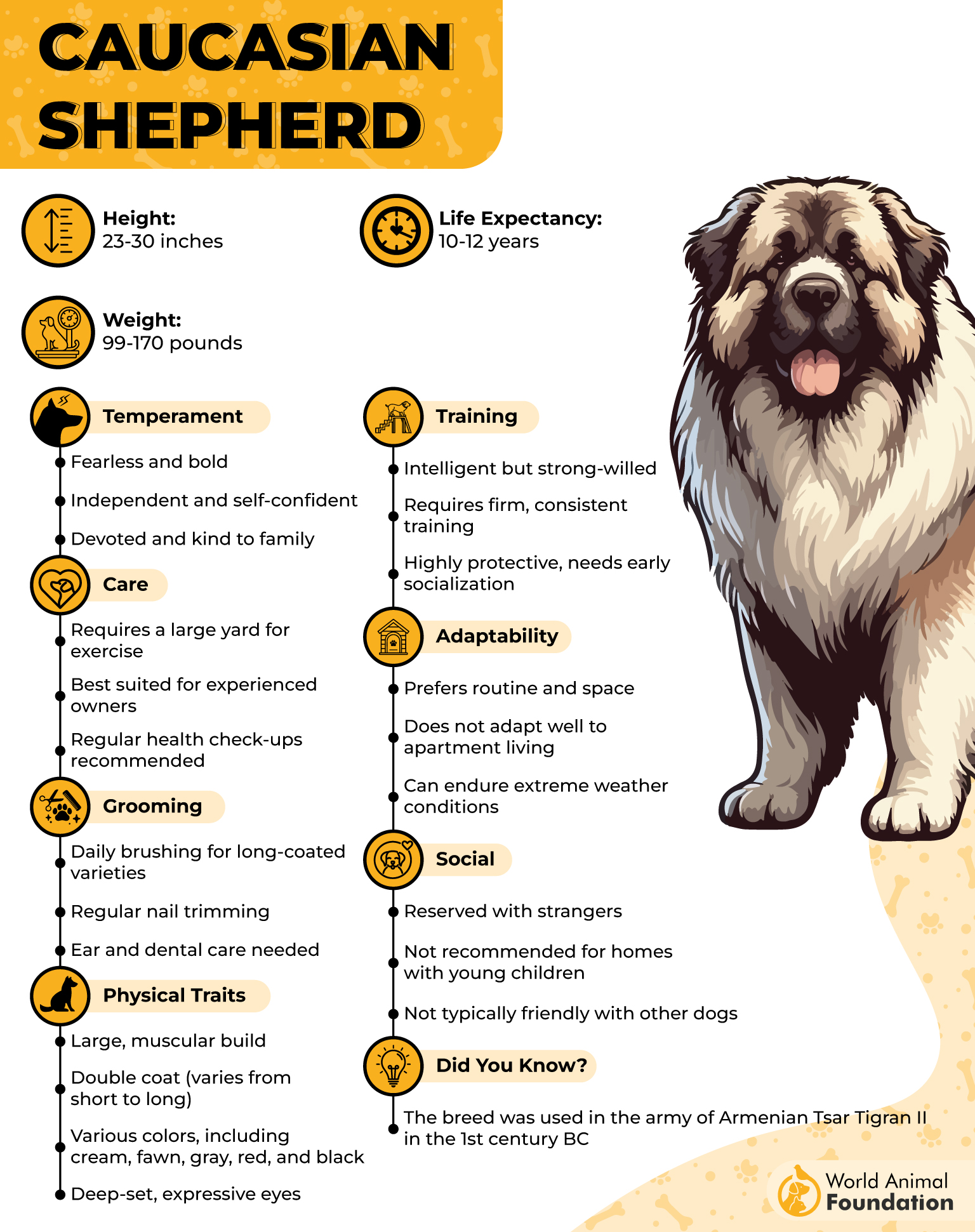
Temperament-wise, they are not for the faint-hearted. Fiercely loyal to their family, they take their role as protectors seriously. Strangers? Not a fan. They assess every situation with a cautious, watchful eye, stepping in only when they sense real danger. Their dominance means they need an owner who can establish clear leadership.
Training a Caucasian Shepherd takes time, patience, and a firm but fair approach. They are highly intelligent but independent, meaning they won’t obey just for the sake of it. Early socialization is key to preventing unnecessary aggression, ensuring they know when to stand their ground and when to relax.
And against a zebra, this powerhouse wouldn’t just chase—it would stand its ground, using sheer presence to intimidate. With their natural guarding instincts, they’d focus on holding their territory rather than needlessly pursuing it, making them a formidable deterrent against any unexpected intruders.
Conclusion
From the fearless Caucasian Shepherd to the ever-reliable Great Pyrenees, these guardian breeds have mastered the art of protection. Whether defending a pasture or keeping herders at ease, they instinctively tend to their duties without hesitation.
Their ability to deter an attack makes them invaluable for those relying on their livestock. While some breeds are self-feeders, others thrive under close guidance, but all share one thing—unwavering loyalty.


